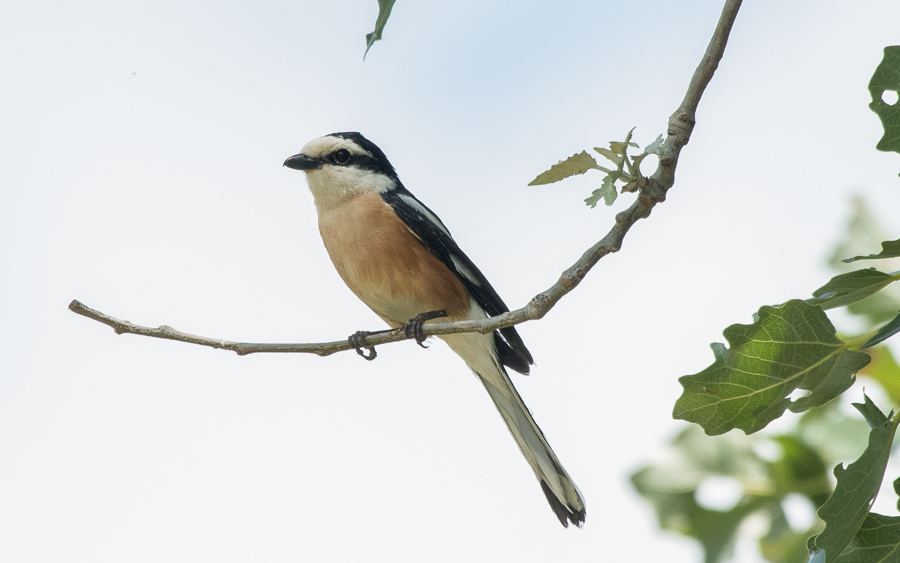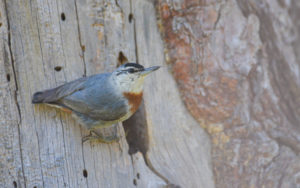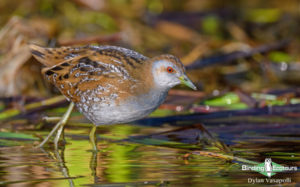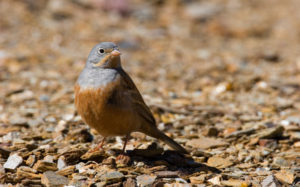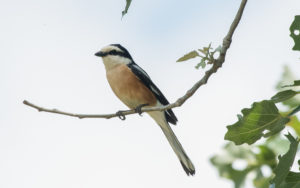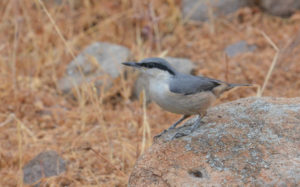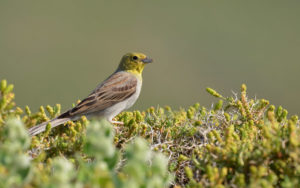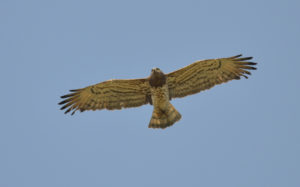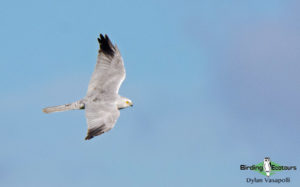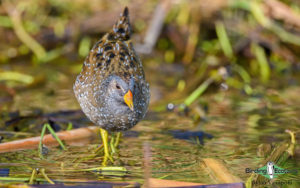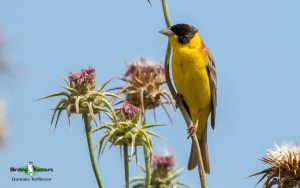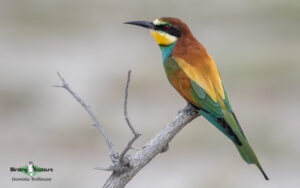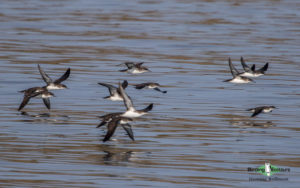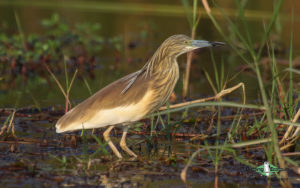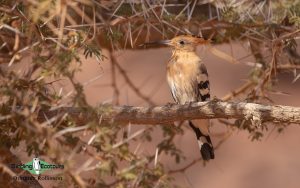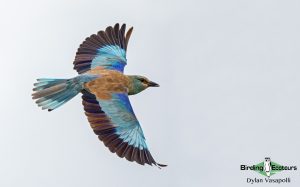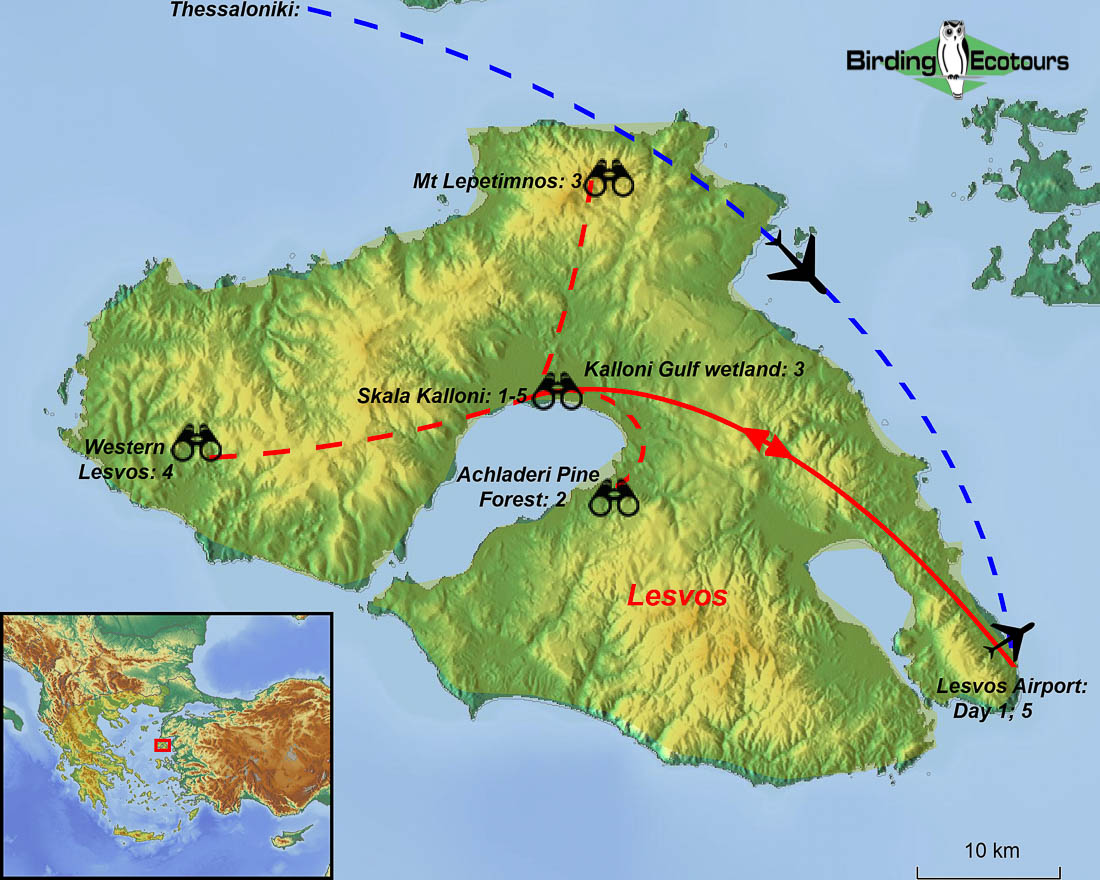Greece: Lesvos in Spring Extension
Go to: Greece Birding Tours | Birding Tours in Europe | All our birding tours
Birding Tour Greece: Lesvos in Spring Extension
May 2026
For the last 40 years, birders across the world have flocked to Lesvos for the awesome birding that this small Mediterranean island has to offer. Lesvos (part of Greece) is separated from mainland Turkey by just eight miles (14 kilometers) of the Mytilini Strait. Its position, at the borders of two continents, results in the island having a great diversity of bird species, of both European and Asian origin, which simply takes off during the migration season (especially in the spring).
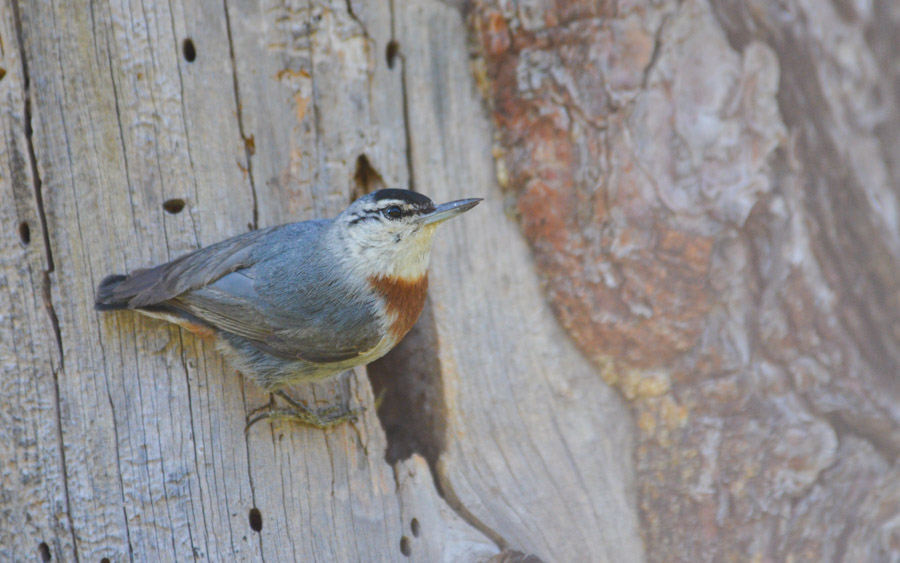 The main resident bird target on Lesvos is Krüper’s Nuthatch – a really beautiful representative of this large and widespread family (photo Eleni Galinou).
The main resident bird target on Lesvos is Krüper’s Nuthatch – a really beautiful representative of this large and widespread family (photo Eleni Galinou).
On this, the third-largest Greek island, extensive areas of very different habitats are found (such as olive groves, pine forest, garrigue, and maquis), while another very important aspect that lures the birds to the island is the number of wetlands that are found here. Lesvos has a surprisingly high bird list for a relatively small island of 348 species (following International Ornithological Congress (IOC) v13.1 taxonomy, as of July 2023), and as such this will prove an excellent short extension to our longer Birding Tour Greece: Spring Birding Adventure on the Greek mainland.
Spring on the island is an incredible experience as thousands of migrant birds pour into and over the island as they return from their sub-Saharan wintering grounds in Africa, some stopping to breed in Lesvos with others continuing further north. Multiple species from a wide range of bird families including many spectacular summer-plumaged warblers, flycatchers, wheatears, shorebirds (waders), crakes, terns, herons, egrets, birds of prey, pipits, wagtails, finches, and buntings move through the island and boost an already impressive resident population of bird species. Some of the top migrant highlights include Eleonora’s Falcon, Lesser Kestrel, Levant Sparrowhawk, Eurasian Scops Owl, Little Crake, Baillon’s Crake, Little Bittern, White-winged Tern, Whiskered Tern, Masked Shrike, European Roller, European Bee-eater, Common Nightingale, Olive-tree Warbler, Rüppell’s Warbler, River Warbler, Rufous-tailed Scrub Robin, Eastern Black-eared Wheatear, Isabelline Wheatear, Collared Flycatcher, Red-throated Pipit, Citrine Wagtail, Black-headed Bunting, Cinereous Bunting, and Cretzschmar’s Bunting.
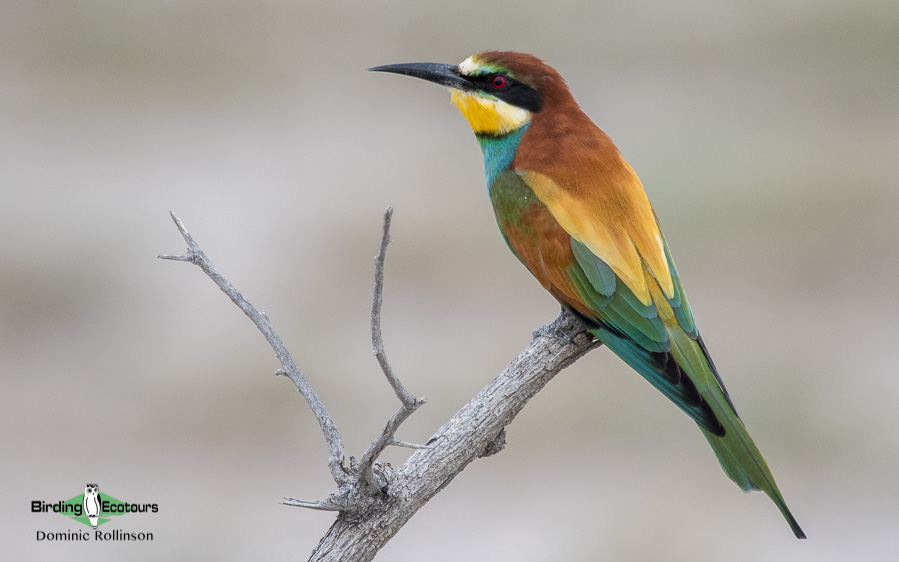
Being an island, Lesvos also has its own selection of interesting localized species and subspecies, including a couple of highly prized birds in Krüper’s Nuthatch and Western Rock Nuthatch. Other interesting resident species include Chukar Partridge, Greater Flamingo, Spur-winged Lapwing, Long-legged Buzzard, Middle Spotted Woodpecker, Short-toed Treecreeper, Long-tailed Tit, Sombre Tit, and Rock Sparrow.
We will search for the beautiful Masked Shrike on Lesvos (photo Lavrentis Sidiropoulos).
You could also combine our two Greece tours with our Birding Tour Bulgaria and Romania: Birding the Balkans in Spring tour which offers a whole host of new species and experiences in two nearby beautiful countries bordering the Black Sea. This provides an ideal combination if you would like to extend your time in this beautiful and unique part of Europe, with some of the other great birds possible including Eastern Imperial Eagle, Saker Falcon, Red-footed Falcon, Wallcreeper (monotypic family), Pied Wheatear, and Semicollared Flycatcher.
Itinerary (5 days/4 nights)
Day 1. Arrival in Lesvos
We will be met at Lesvos airport and transferred to our nearby hotel in picturesque Skala Kalloni where we will base ourselves for the duration of this tour. Along the way we might get time to look out at sea where we could see Yelkouan Shearwater, Scopoli’s Shearwater, Mediterranean Gull, Yellow-legged Gull, Great Cormorant, and European Shag.
Once we have checked into our accommodation, we will get straight into exploring the local area and familiarizing ourselves with its avifauna, in particular, common species such as Common Nightingale, Eastern Olivaceous Warbler, White Stork, European Bee-eater, Eurasian Hoopoe, Red-backed Shrike, Woodchat Shrike, Eurasian Golden Oriole, Whinchat, and Red-rumped Swallow. These species, plus many more, move through Lesvos throughout the spring passage season and the number and make up of species can vary daily, making for a really exciting time for us. The Lower Tsiknias Valley, not too far from our accommodation, is a great migrant trap and we might find a range of waterbirds, including marsh terns (Black Tern, White-winged Tern, and Whiskered Tern), a range of shorebirds, herons, ibises, and crakes. The scrub here can also be full of warblers and Spanish Sparrows with the adjacent fields an excellent spot for shrikes, chats, and buntings.
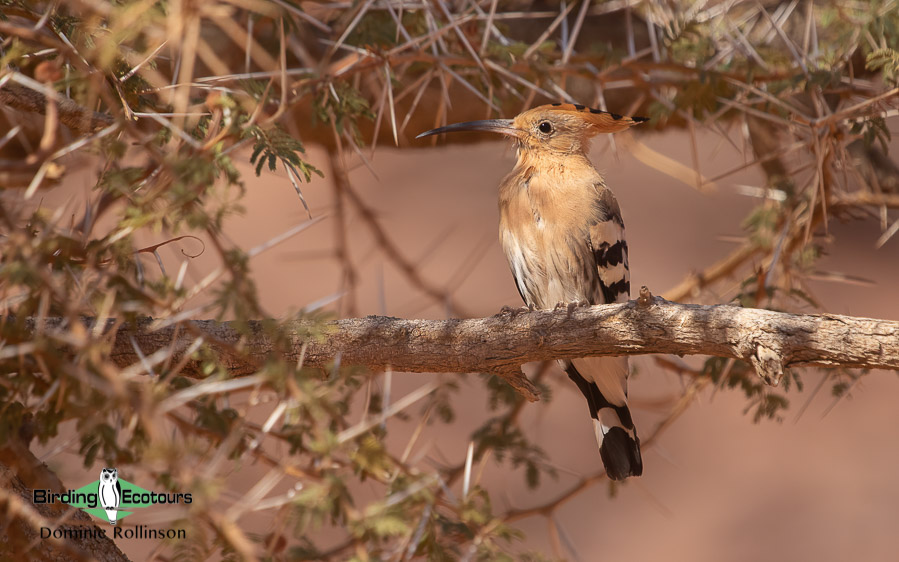
The area around our accommodation could also yield Eurasian Scops Owl, Western Barn Owl, Long-eared Owl, and River Warbler. Once back at our hotel we will discuss the various birding areas on the island and the plan for the next three days when we will target the many highlight birds available by visiting the key sites and habitats for these birds.
The thrill of birding somewhere like Lesvos during the spring migration is that a wide range of species can occur anywhere at any time. While exploring the island over the next few days we will keep an eye open (and skywards) for numerous raptor species that can be possible here, such as Long-legged Buzzard, Short-toed Snake Eagle, Western Marsh Harrier, Montagu’s Harrier, Peregrine Falcon, Eleonora’s Falcon, Red-footed Falcon, Lesser Kestrel, and Levant Sparrowhawk. The same is true for many other groups of birds and so we will be prepared to stop and look, as and when required, it is sure to be an enthralling few days birding.
Overnight: Malemi Organic Hotel, Skala Kalloni
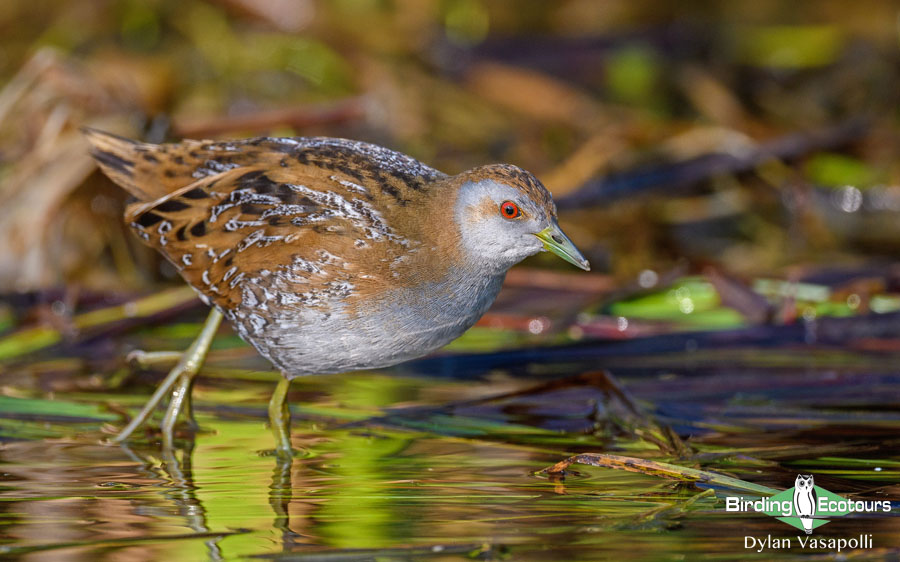
Day 2. Achladeri Pine Forest and Kalloni Gulf wetlands
Lesvos is one of the best areas in Europe for finding the localized Krüper’s Nuthatch, and we have a wonderful chance to get close-up views of this highly sought-after species when we visit Achladeri Pine Forest. Other forest species that we might see here include Middle Spotted Woodpecker, Short-toed Treecreeper and the local form of Long-tailed Tit. Other breeding species here include Masked Shrike, Woodlark, and Eastern Black-eared Wheatear.
In the island’s olive groves, such as those in the Achladeri area, we should get good sightings of Olive-tree Warbler, Eastern Subalpine Warbler, and Middle Spotted Woodpecker and as we move between Achladeri Pine Forest and Kalloni Gulf wetlands, our other main site for the day. We might call into a rocky outcrop area with the chance of both Western Rock Nuthatch and Blue Rock Thrush.
The Kalloni Gulf is surrounded by different types of coastal wetlands, including a large area of saltpans, making it an ideal place to search for migrating and breeding waterbirds but plenty of other birds can be found here too. We will be able to see the elegant Black-winged Stilt nesting, plus Little Bittern, Little Egret, Great (White) Egret, Squacco Heron, Grey Heron, Purple Heron, Black Stork, and Ruddy Shelduck on their breeding grounds, together with an excellent variety of shorebirds (waders) such as Collared Pratincole, Eurasian Stone-curlew, Little Stint, Curlew Sandpiper, Kentish Plover, and Little Ringed Plover. We may even find the stunning Spur-winged Lapwing.
Overnight: Malemi Organic Hotel, Skala Kalloni
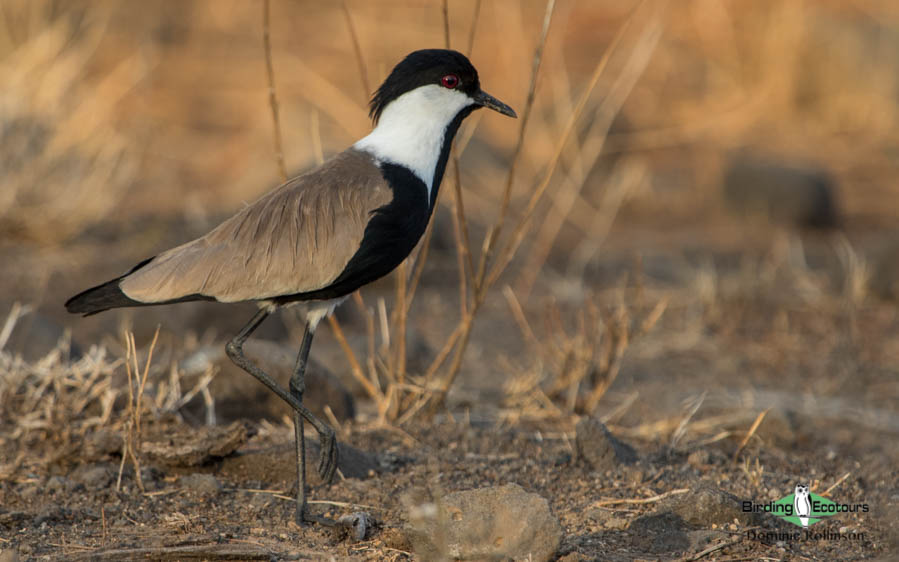
Day 3. Kalloni Gulf wetlands, the central island, and Mount Lepetimnos
We will start the day searching nearby wetlands for species such as those mentioned above plus others such as Pied Avocet, Black-tailed Godwit, Wood Sandpiper, Marsh Sandpiper, Ruff, Common Tern, Little Tern, Black Tern, Whiskered Tern, White-winged Tern, Black-crowned Night Heron, Little Crake, and Spotted Crake which are all possible. We should also see plenty of gorgeous Greater Flamingos here too, along with Eurasian Spoonbill, Glossy Ibis, Common Shelduck, and Garganey, a huge variety of species is possible.
It is also worth scanning the open areas here for Pallid Harrier, Montagu’s Harrier, and Red-footed Falcon, arguably three of the best-looking raptors in Europe. We might also come across flocks of pipits and wagtails, these could include several subspecies of the Western Yellow Wagtail complex (including the stunning black-headed feldegg subspecies), Citrine Wagtail (a shockingly colorful bird at this time of year), Red-throated Pipit, and Tawny Pipit.
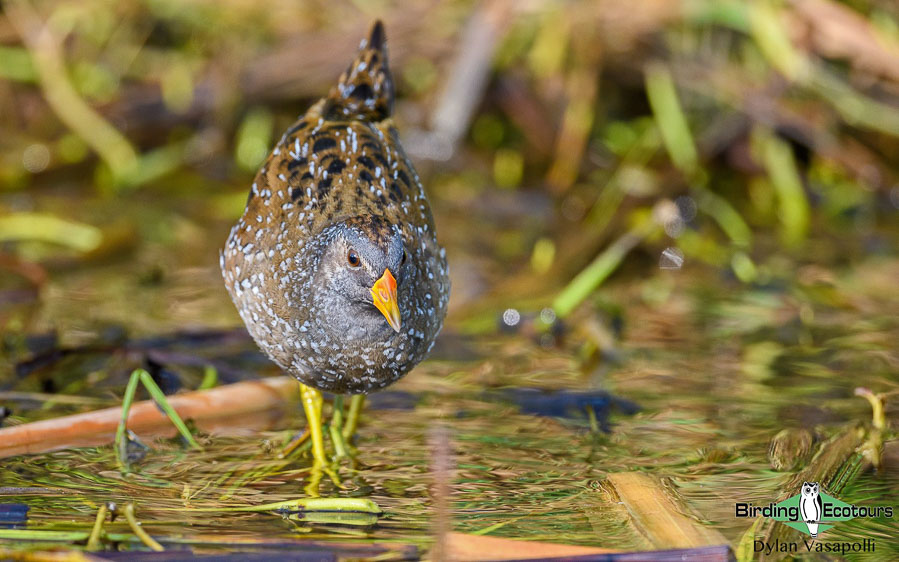
From here we will make our way to the north of the island around Mount Lepetimnos, where we have the opportunity to again observe Masked Shrike along with lots of other really exciting species, such as Black Stork, Woodchat Shrike, Sombre Tit, Western Rock Nuthatch, Rüppell’s Warbler, Eastern Subalpine Warbler, Olive-tree Warbler, Eastern Bonelli’s Warbler, Black-headed Bunting, European Pied Flycatcher, Collared Flycatcher, Middle Spotted Woodpecker, Little Owl, and Eurasian Scops Owl.
Driving the roads here we might locate European Bee-eater, European Roller, Lesser Grey Shrike, Chukar Partridge, Red-rumped Swallow, Eurasian Crag Martin, Alpine Swift, or European Turtle Dove, so it’s always worth keeping our eyes peeled!
Mount Lepetimnos is another area that is usually particularly good for raptors and we will keep a look out for those as usual, maybe finding Eurasian Goshawk, Peregrine Falcon, Short-toed Snake Eagle, or Eleonora’s Falcon while here.
Overnight: Malemi Organic Hotel, Skala Kalloni
Day 4. Western Lesvos
Lesvos is one of the few islands where you can find Cinereous Bunting, and this species will be our main target for the day as we head out to the west of the island on what promises to be an exciting day. Today is often considered the most enjoyable day on Lesvos, due to the amazing scenery and birds possible.
While searching for Cinereous Bunting we will be able to see a variety of species occupying the extensive garrigue areas (garrigue is a low, soft-leaved scrubland ecoregion and plant community found in the Mediterranean) of the western island, with scattered and thin oak forest. We will also look for the gorgeous Cretzschmar’s Bunting, Cirl Bunting, Rock Sparrow, Isabelline Wheatear, Eastern Black-eared Wheatears, Northern Wheatear, Western Rock Nuthatch, Blue Rock Thrush, Eastern Orphean Warbler, Rufous-tailed Scrub Robin, Common Linnet, European Serin, European Goldfinch, and Little Owl.
Other birds we will be looking for in this general area could include Pallid Swift, Eleonora’s Falcon, Chukar Partridge, Common Quail, Lesser Kestrel and proper Rock Doves, not just the standard ‘Feral Pigeons’ that are so widespread around the world now, but their wild ancestors – the real deal! There are bound to be many other interesting birds found throughout the day too.
Overnight: Malemi Organic Hotel, Skala Kalloni
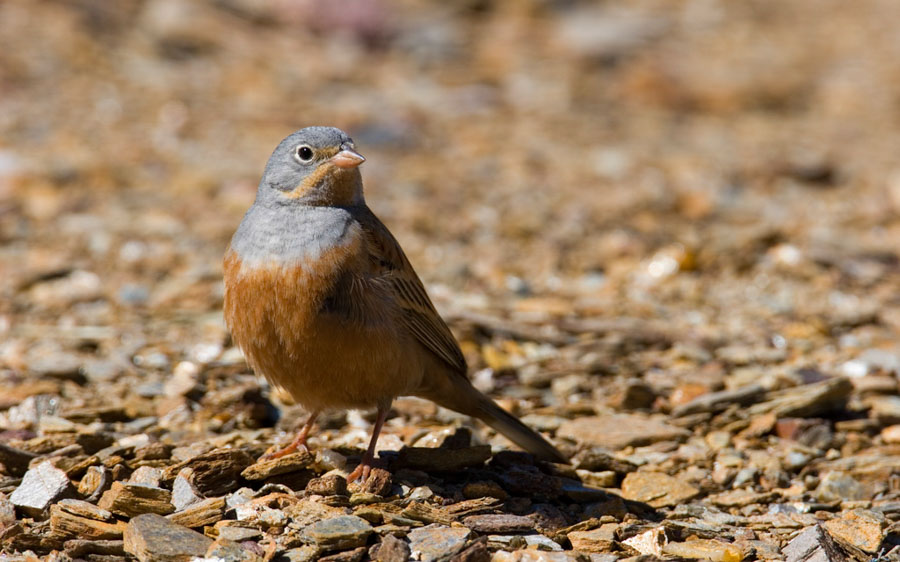
Day 5. Departure
We should have time for some early morning birding around our accommodation before we wrap up our activities and make our way to Lesvos Airport for the flight back home in the afternoon.
If you are not ready to head home yet, you could join us for our Birding Tour Bulgaria and Romania: Birding the Balkans in Spring tour, which offers an unforgettable experience in the Black Sea region of Europe, where yet more exciting birds await, such as Wallcreeper, Eastern Imperial Eagle, Cinereous Vulture, Spotted Nutcracker, Grey-headed Woodpecker, Syrian Woodpecker, Black Woodpecker, Pied Wheatear, and Semicollared Flycatcher, to name just a few.
Overnight: Not included
Please note that the itinerary cannot be guaranteed as it is only a rough guide and can be changed (usually slightly) due to factors such as availability of accommodation, updated information on the state of accommodation, roads, or birding sites, the discretion of the guides and other factors. In addition, we sometimes must use a different international guide from the one advertised due to tour scheduling.
Download Itinerary
Greece Birding Adventure with Extension to Lesvos Trip Report
2 – 15 MAY 2016
DOWNLOAD TRIP REPORT
OVERVIEW
While coming to Greece on a Birding Ecotours adventure is most definitely about the birds, one simply must visit some of the archaeological sites around Athens as well as prepare oneself for the incredible ‘wining and dining’ that the country has to offer! The Acropolis of Athens, the majesty of Lake Kerkini, the beauty of the Dadia Forest, and the wonderful island of Lesvos make the Greece birding adventure, with the Lesvos extension, one to remember.
MAIN TOUR
Pre-day, May 2. Arriving in Greece
After touching down safely in Athens we were transferred to our hotel, which was five minutes walk from the Acropolis Museum and Acropolis hill. That evening before dinner we had a guided tour of the Acropolis of Athens. The roots of the Greek word “Acropolis” would be translated to “city edge”, (acro – edge, polis – city). Seeing the Acropolis and its important historic buildings, such as the Parthenon, up close is just fascinating and gives a really good foundational knowledge of the rich history of the city of Athens and Greece as a whole. A birding highlight for the afternoon was watching both Common and Alpine Swifts cruise all around us while walking on the Acropolis.
Day 1, May 3. Cultural Highlights and European birding introduction in Athens
Athens, which can be considered the historical capital of Europe, has an incredible charm. Walking the streets of this modern metropolis allowed us to get the true feel of the city. After having visited the Acropolis the night before, we visited some of the surrounding area and many other important sites, such as the Areopagus hill (from where the below photograph of the Acropolis was taken), Philopappou Hill, the Roman Agora, the Temple of Olympian Zeus, as well as the Athens National Garden. Some of the species that caught our attention throughout the day were Eastern Olivaceous Warbler, Common Blackbird, European Robin, and Eurasian Magpie. An authentic Greek-style dinner in the Plaka neighborhood was complemented by the beauty of the Acropolis under floodlights.
Day 2, May 4. Athens birding and flight north to Thessaloniki
A quick breakfast at the Acropolis Boutique Hotel kicked off the day before we were picked up and taken to the Hymettos Mountain, which lies to the east of Athens, for a morning’s birding before making our way to the airport for our short local flight to Thessaloniki. The birding was good and gave us more of an indication of what was to come. Some of the species we managed to find were Rüppell’s Warbler, Subalpine Warbler, Alpine Swift, Eurasian Magpie, Eurasian Jay, Short-toed Treecreeper, Eurasian Sparrowhawk, and Black-eared Wheatear. Once we had landed in Thessaloniki we were picked up by Lavrentis, who was to be our guide for the Northern Greece leg of the trip. After picking up some Western Jackdaw and a single Rook, we made one stop on the way north to Kerkini, where we had some really nice sightings of Lesser Kestrel, both males and females. We also managed to improve our trip list with the addition of some of the more common species in the north; these included Red-rumped Swallow, Common House Martin, White Stork, and Common Buzzard. The town of Kerkini is peaceful and is a perfect spot from which to explore the region. Dinner was just a thirty second walk from our guest house, and yes, it was really good!
Day 3, May 5. Lake Kerkini and the Dalmatian Pelican
A fairly early start in Kerkini allowed us to catch some of the morning light, and with that came a lovely pair of Red-footed Falcons perched up on some of the telephone lines. It was also a good day for Cetti’s Warbler – a very confiding individual singing his lungs out gave us a bit of a show and even allowed for some ‘in the open’ photographs, a real treat from a master skulker. The morning’s birding was mainly around the eastern bank of Lake Kerkini; here we had our first taste of this beautiful lake and the birds that call it home for the summer. Species that entertained us that morning included some real European specials. Dalmatian Pelican and Pygmy Cormorant both showed well that morning along with other waterfowl, such as Great Cormorant, Great White Pelican, Great-crested and Little Grebes, Little Bittern, Eurasian Spoonbill, Squacco and Purple Herons, and Black-crowned Night Heron. Eurasian Golden Oriole, Common Cuckoo, and Common Nightingale were all in full song throughout both days around Kerkini; sightings of these species weren’t too common, though. On the raptor front European Honey Buzzard and White-tailed Eagle entertained us with fairly brief fly-bys, while Western Marsh-Harrier and Black Kite were around in good numbers. European Green Woodpecker obliged by landing quite low alongside the road just as we started to move off from the lakeside. The afternoon warranted a visit to the well known Serres quarry for the likes of Western Rock Nuthatch and some raptors. We did well in the general area, managing to find Cirl Bunting, Subalpine Warbler, Black-eared Wheatear, a very brief view of Black Redstart, and Common Buzzard, as well as Short-toed Snake Eagle. One of the highlights of the trip in fact was watching some territorial Levant Sparrowhawks in some aerial displays as well as some aerial duels in the area of the quarry.
Day 4, May 6. Lake Kerkini boat cruise and woodpeckers
After traveling to some parts of the lake yesterday, today we had an organized boat ride to get a little closer to some of the specials that the lake offers. Once again a beautiful morning greeted us, and the birds certainly did not disappoint. All three species of Chlidonias terns, namely Whiskered, White-winged, and Black Terns, were present throughout the boat trip – some showing off some acrobatics as they skimmed the water surface. Once again both Pelican (Great White and Dalmatian) and Cormorant (Great and Pygmy) species showed exceptionally well, and add to that the advantage of being on a boat and you have some amazing photographic opportunities! A few of the other species that we saw from the boat included Pied Avocet, Common Shelduck, Common Pochard, and Mute Swan. The boat trip was truly a highlight and any boat trip adds fantastic dynamic to any birding tour. Both Black and White Storks were seen during the afternoon birding session, which we had near the lake and in the surrounding areas. One of the main targets for the afternoon was Grey-headed Woodpecker, which breeds in large stands of trees along the lake. We picked up on some drumming nearby, and after finding Great Spotted Woodpecker first, we also heard the call of Grey-headed Woodpecker. The bird took a little while to locate, but once we were onto it extended views were had. Some other species that afternoon included Black-headed and Corn Buntings, Crested Lark, Syrian and Lesser Spotted Woodpeckers, Little Owl, Northern Raven, the brilliant Blue Rock Thrush, and a smart-looking Long-legged Buzzard.
Day 5, May 7. Alpine birding on Mount Pangaion and at Kavala
We departed from Kerkini after breakfast and made our way to Mount Pangaion, which reaches an elevation of 1956m above sea level. Mount Pangaion would offer us a few “alpine species” that enjoy the higher, colder, mountainous terrain. A brief European Roller sighting kicked off the trip toward the mountain, and before we knew it the temperature was dropping and the mist was rolling in. One of the specials of the area, Rock Partridge, occupies the rocky hillsides and was one of the biggest targets for us for the morning. Common (Rufous-tailed) Rock Thrush showed rather nicely, while the calls of Ortolan Bunting and Black Redstart rang up from below us. We spotted a single Rock Partridge ahead of us and were more than satisfied with good scope views. A pair of Alpine Chough cruised over, but disappeared all too quickly back into the thickening mist. We ascended further and had some lunch near the top of the mountain – alongside a couple of new species for our trip list; these included Common Linnet, Horned Lark, Woodlark, Eurasian Skylark, Tawny Pipit, and Northern Wheatear. The drive back down was quiet bird-wise, but we did add sightings of Common Chiffchaff and Song Thrush. A successful day up on Mount Pangaion indeed, and all that was left was a scenic drive to the city of Kavala. Dinner right on the beach of this picturesque city, which is built on the slopes of Mount Symvolo, was the perfect way to end the day.
Day 6, May 8. Nestos Delta and Evros Delta
Leaving Kavala behind we headed to the delta habitats of Nestos and Evros. Our first stop was at the Nea Kessani salt pans. Driving in we picked up Zitting Cisticola, Whinchat, and Bimaculated Lark throwing around some mimicry. In the summer the pans are home to good numbers of Greater Flamingos, shorebirds, and other waterfowl; some of the species we found here were Black-winged Stilt, Eurasian Oystercatcher, Little Ringed and Kentish Plovers, Curlew Sandpiper, Little Stint, Dunlin, Ruff, and Common Redshank. A group of four Gull-billed Terns was feeding over a nearby field on our way out. The afternoon was spent birding some of the quieter back roads on the way to our accommodation in Dadia. At some local wetlands and lakeside patches we picked up the likes of Eurasian Penduline Tit, Western Yellow Wagtail, Collared Pratincole, and Common Snipe, as the booming calls of Eurasian Bitterns resounded through the reedbeds. We moved on to some woodland in search of woodpeckers and potentially some shrikes too and were rewarded with a fantastic sighting of a roosting Tawny Owl sitting high up in a mature tree. Some of the other species seen on the way to Dadia included Eurasian Nuthatch, Red-backed and Woodchat Shrikes, and Corn Bunting, as well as Spotted Flycatcher. Before dinner we were sure to add European Serin and European Goldfinch to our day list, both species hanging around the beautiful pine trees surrounding our accommodation for the night.
Day 7, May 9. Evros Delta
Today saw us head out to parts of the Evros Delta, where really good numbers of waterfowl, waders, and wetland species were lingering. The local ‘parks officials’ showed us a short introduction video on the Evros Delta and surrounds, which helps one to realize the vastness of the area. The birding started out alongside some small pans, which held the likes of the striking Little Gull, Northern Lapwing, Northern Pintail, Garganey, and a flock of Ferruginous Ducks. The delta really was teeming with bird species, and European Bee-eaters provided us with some entertainment, swooping around hawking insects. The coastline was also productive, and here we added Grey Plover, Eurasian Oystercatcher, Mediterranean Gull, and the large Yellow-legged Gull. We headed deeper still into the delta through some pretty wet terrain and added some waders, including a few new ones for our trip list: Wood Sandpiper, Eurasian Curlew, and Spotted Redshank. Another highlight for the morning’s session was a couple of Ruddy Shelducks alongside large flocks of herons, egrets, and Common Shelducks. Continuing in the delta region in the afternoon we targeted Masked Shrike, which enjoys perching on the sides of thick bushes and shrubs alongside the roads. We were not disappointed and had both males and females pose fairly well for the cameras. We also had the likes of European Turtle Dove, Common Reed Bunting, Glossy Ibis, Great Reed Warbler, Squacco Heron, and Purple Heron.
Day 8, May 10. Dadia Forest
The Dadia Forest is well known for its vulture feeding station with observatory, and this was our first stop of the day. From the observatory one can get exceptional looks at Cinereous Vulture and Griffon Vulture, as well as the rare Egyptian Vulture, and, sure enough, all three species were on show for us today. Really good scope views of about six Cinereous, two Egyptian and over ten Griffons were had. The subtle call of Eastern Bonelli’s Warbler started to ring through parts of the forest, and soon enough we tracked one down and had exceptional looks at this tiny Phylloscopus warbler. After we had spent as much time as we needed at the observatory and in the forest area we drove to another mountainous spot close by; here we had lunch and found species such as the sought-after Sombre Tit, Rock and Ortolan Buntings, Lesser Whitethroat, Hawfinch, Middle Spotted Woodpecker, and Mistle Thrush. The last spot that we visited that day catered for warbler species in some road verge thickets, most of which we had already seen on the trip, but they are always worth a second look: Common Whitethroat and Sardinian and Eastern Orphean Warblers, the latter giving us the runaround.
Day 9, May 11. Drive to Thessaloniki and departure for Lesvos
We set off quite early from the Dadia Inn so that we could catch our local flight from Thessaloniki to the island of Lesvos.
5-DAY EXTENSION TO THE ISLAND OF LESVOS
Day 1 (Day 9), May 11. Mytilene to Skala Kalloni
Arriving in Mytilene, the capital of Lesvos, we already knew by the scenery, the beautiful calm sea, and the lovely sunshine that we were in for a real treat during our time on the island. Migration was in full swing, and many species were still on the island, some of which had already started breeding. A forty-five minute drive from the Mytilene airport to our accommodation in Skala Kalloni allowed us to get a good feel for the habitats on the island. Lesvos is well known for the production of olive oil, with approximately eleven million olive trees on the island, but it is also renowned among European birders as one of the migration hotspots during the spring. After arriving at our accommodation we enjoyed a lovely Greek-style lunch and later met up with our local guide, Eleni, to discuss the birding plans for the Lesvos leg of the trip.
Day 2 (Day 10), May 12. Achladeri Pine Forest and Kalloni Gulf wetlands
We kicked off the birding along some of the wetland patches around the Kalloni salt pans, targeting Rufous-tailed Scrub Robin among others. The robin was soon heard calling nearby, and on our second attempt we managed to have some nice looks. A pair of Little Terns bred in a canal next to where we found the robin, and so we had some nice views of them feeding over the canal. Krüper’s Nuthatch is one of the more obvious targets for the island, and so we decided that we would dedicate the rest of the morning to look for the nuthatch. After spending a good twenty minutes wandering through a nearby pine forest, the preferred habitat of the nuthatch, we were alerted to the presence of one individual by its simple contact call. Krüper’s Nuthatch normally moves around in little family groups, and so this single individual didn’t hang around too long; we were going to have to give it another try. We did manage to see Long-tailed Tit, which we dubbed “flying teaspoon”, as well as European Serin and Great and Eurasian Blue Tits. Eleni managed to locate a couple of roosting owls in some nearby groves, first a Long-eared Owl and then a couple of Eurasian Scops Owls. We also found out firsthand why Olive-tree Warblers are named as such after finding a few inside olive groves in different spots on the island. Our afternoon birding session included another shot at Krüper’s Nuthatch, and after some searching we managed to find a parent bird clambering around collecting food among the pine cones for one of its young following nearby, a marvelous sight!
Day 3 (Day 11), May 13. Western Lesvos
Today we headed out toward the western parts of Lesvos, known as the drier, rockier area that brings a few different species to the party. Our first stop, quite high up one of the steep hillsides, allowed us to add Chukar Partridge, Northern and Isabelline Wheatear, Cretzschmar’s Bunting, Western Rock Nuthatch, Black-eared Wheatear, and the sought-after Cinereous Bunting to our list. Keeping our eyes to the skies eventually paid off as we spotted a couple of Eleonora’s Falcons as well as some Lesser Kestrels and Northern Raven. In total we managed to see one dark morph and two light morph of Eleonora’s Falcon. A very confiding Little Owl gave us some nice photo opportunities, while a couple of Common Linnets were also rather approachable while feeding on some plant seeds. A flock of wild-type Rock Doves was preferred to feral populations in cities. Other attractions during the day included Icterine Warbler, Pallid Swift, European Shag, Eurasian Crag Martin, Blue Rock Thrush, Short-toed Snake Eagle, and Yelkouan Shearwater offshore while doing some sea-watching. Unanimously, today was one of the most enjoyable days of the trip.
Day 4 (Day 12), May 14. Kalloni wetlands and parts of Central Lesvos
Today was to be our last full day’s birding, and so we had a few things in mind, but mostly just set out to enjoy the last day of what had been a fabulous birding adventure. We started off with a family of really obliging Sombre Tits and a little further up the road managed both Western Rock Nuthatch once again and Rufous-tailed Scrub Robin. Eastern Orphean Warbler was heard a couple of times along the track and took some work before any good sightings were had. Masked Shrike and Olive-tree Warbler were once again active, while Common Nightingale and Cetti’s Warbler made themselves heard. We spent quite some time staking out an area in some olive groves in order to get some visuals of the elusive Middle Spotted Woodpecker. The woodpecker kept landing behind stands of trees, but after a while we managed to see it climbing up some branches or flying across the road in front of us. We headed through some villages into the hillsides and found the likes of Alpine Swift, Eurasian Hoopoe, Short-toed Snake Eagle, and Eastern Olivaceous Warbler, as well as two separate European Honey Buzzards. Our last species, of which we eventually got some really nice pictures, was Subalpine Warbler, a stunning Sylvia warbler, to finish proceedings.
Day 5 (Day 13), May 15. Mytilene town and departure
A relaxing morning was had on this our final travel day. We made our way to Mytilene, where we had some time to walk around, do some final shopping, have lunch, and catch our flights back to Athens. We didn’t give up on the birding completely, however, and had a Peregrine Falcon cruising around above the waterfront of Mytilene. That, however, was the last species we added to out trip lists, bird species number 199.
Looking back on this fantastic tour; the combination of Greece’s rich history, fascinating archaeological sites, and western Palearctic spring migration really made for a superb trip. Many thanks to everyone for an unforgettable trip, and happy birding!
Please see the downloadable PDF above with the full species lists included. This is a sample trip report. Please email us ([email protected]) for more trip reports from this destination.
